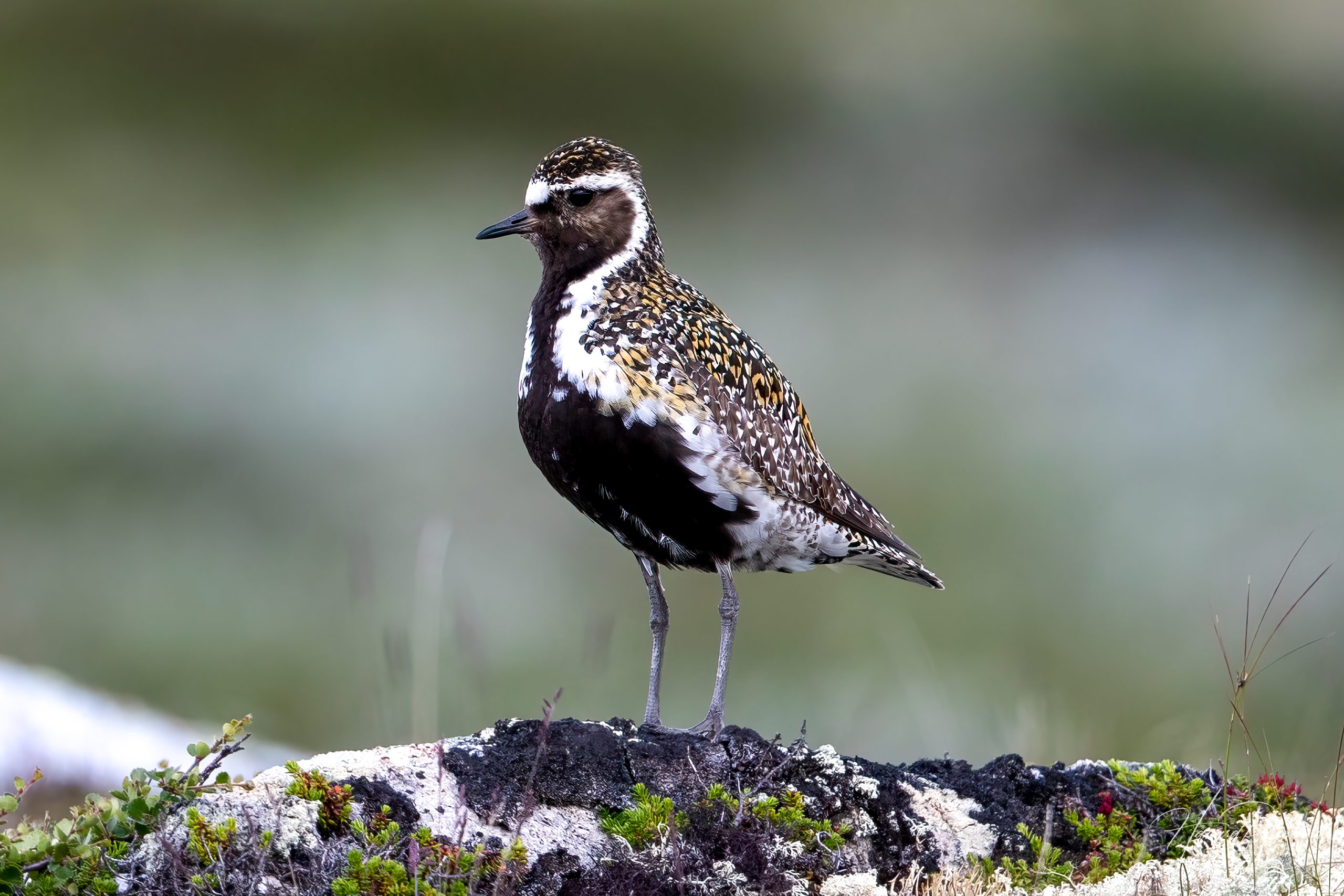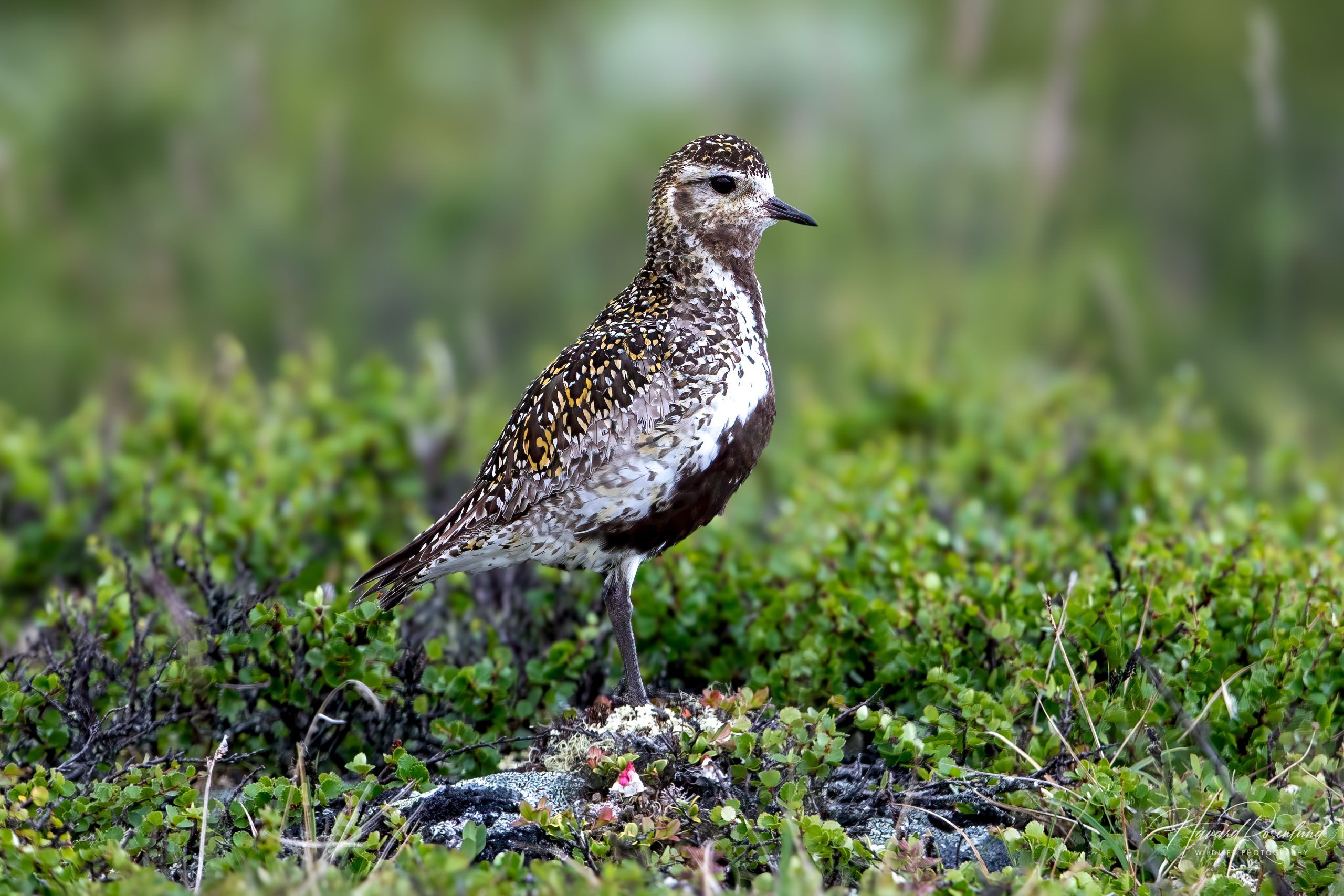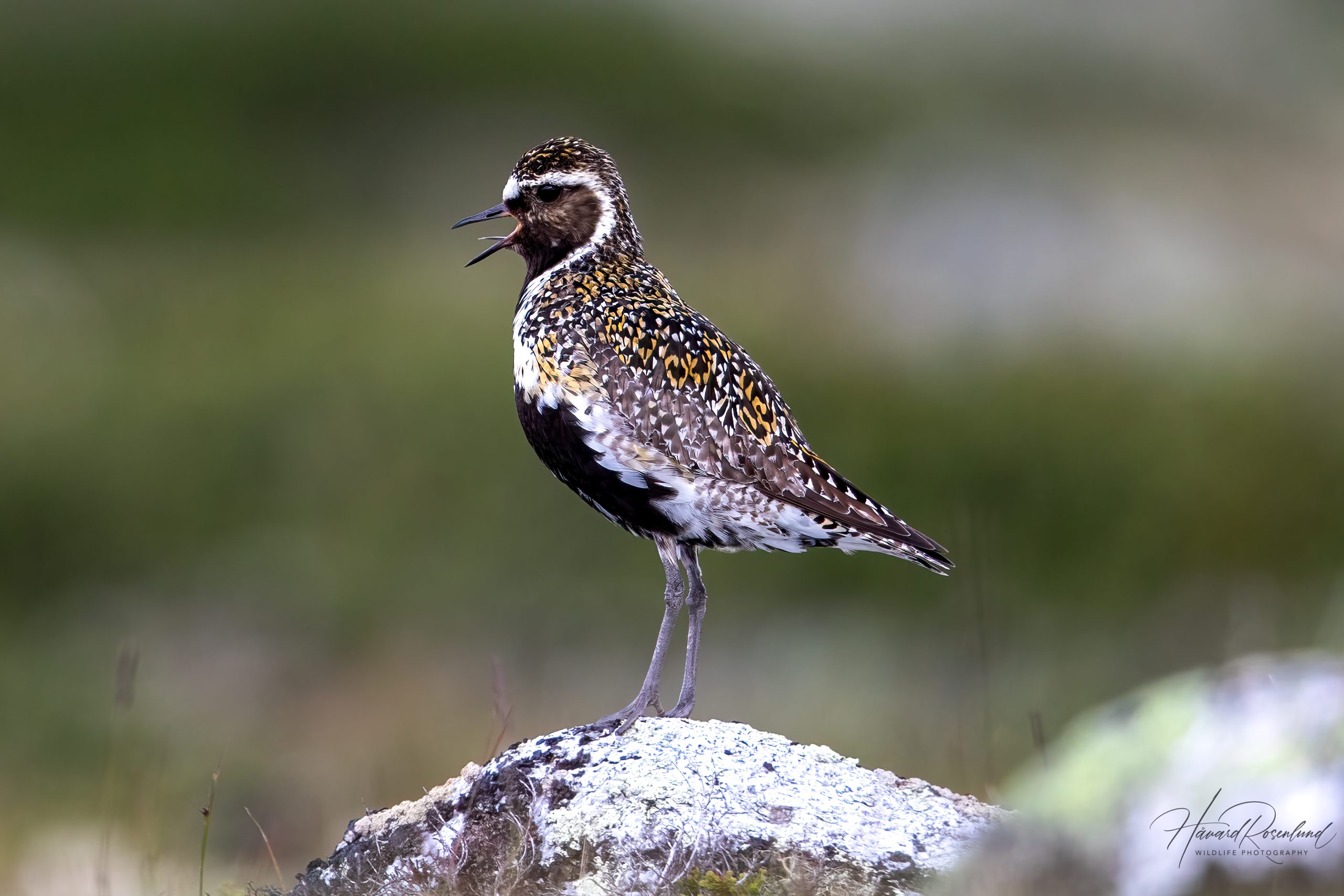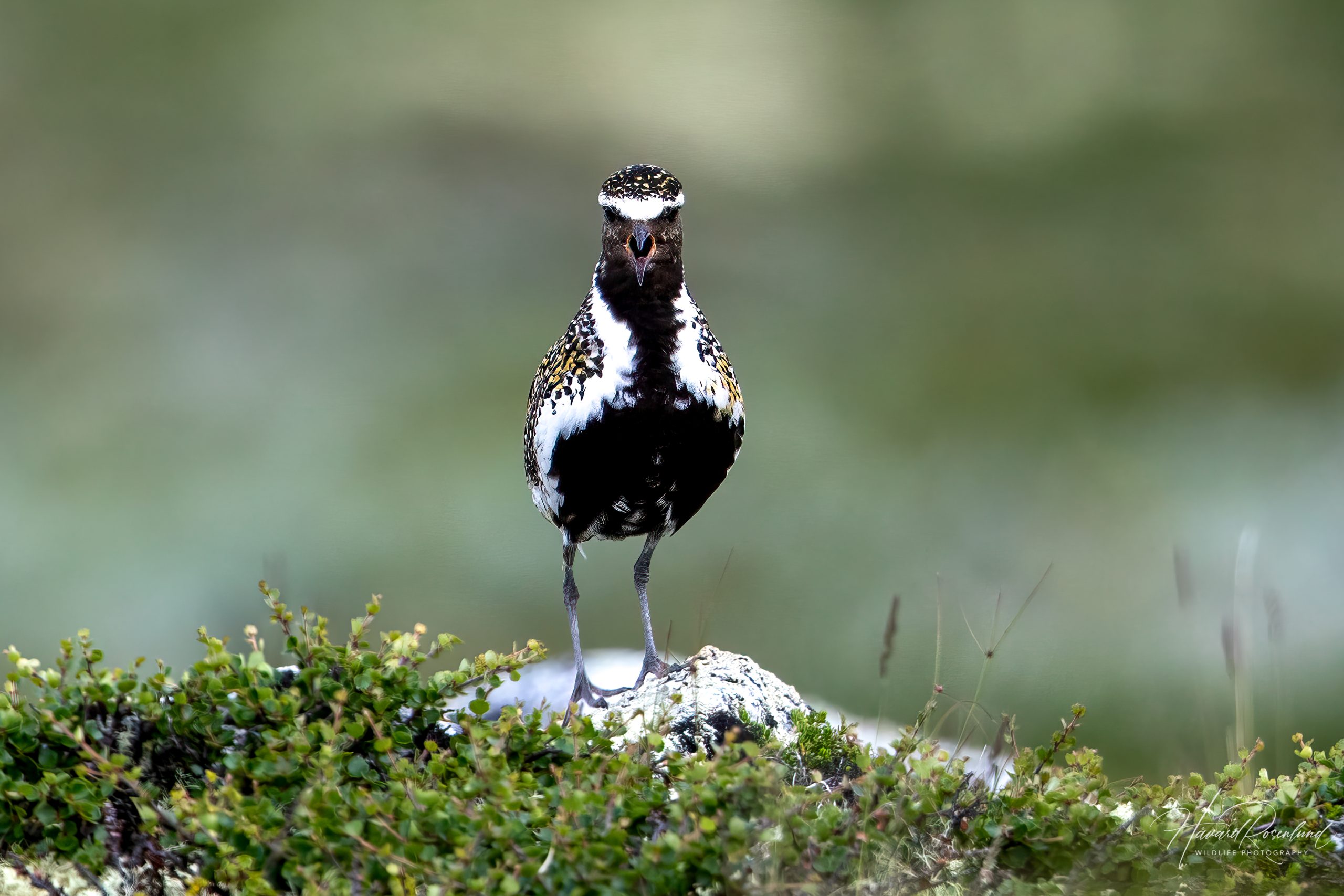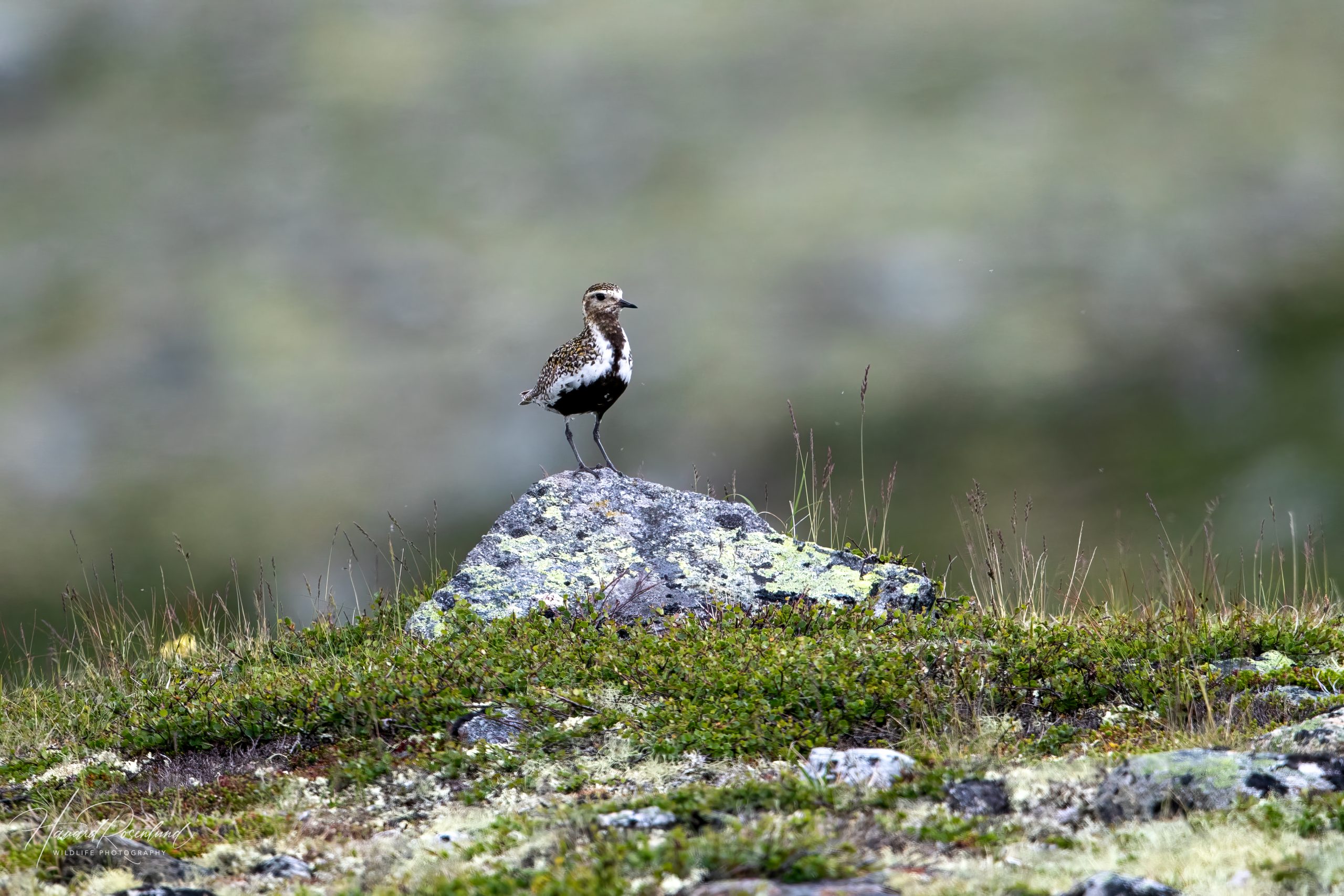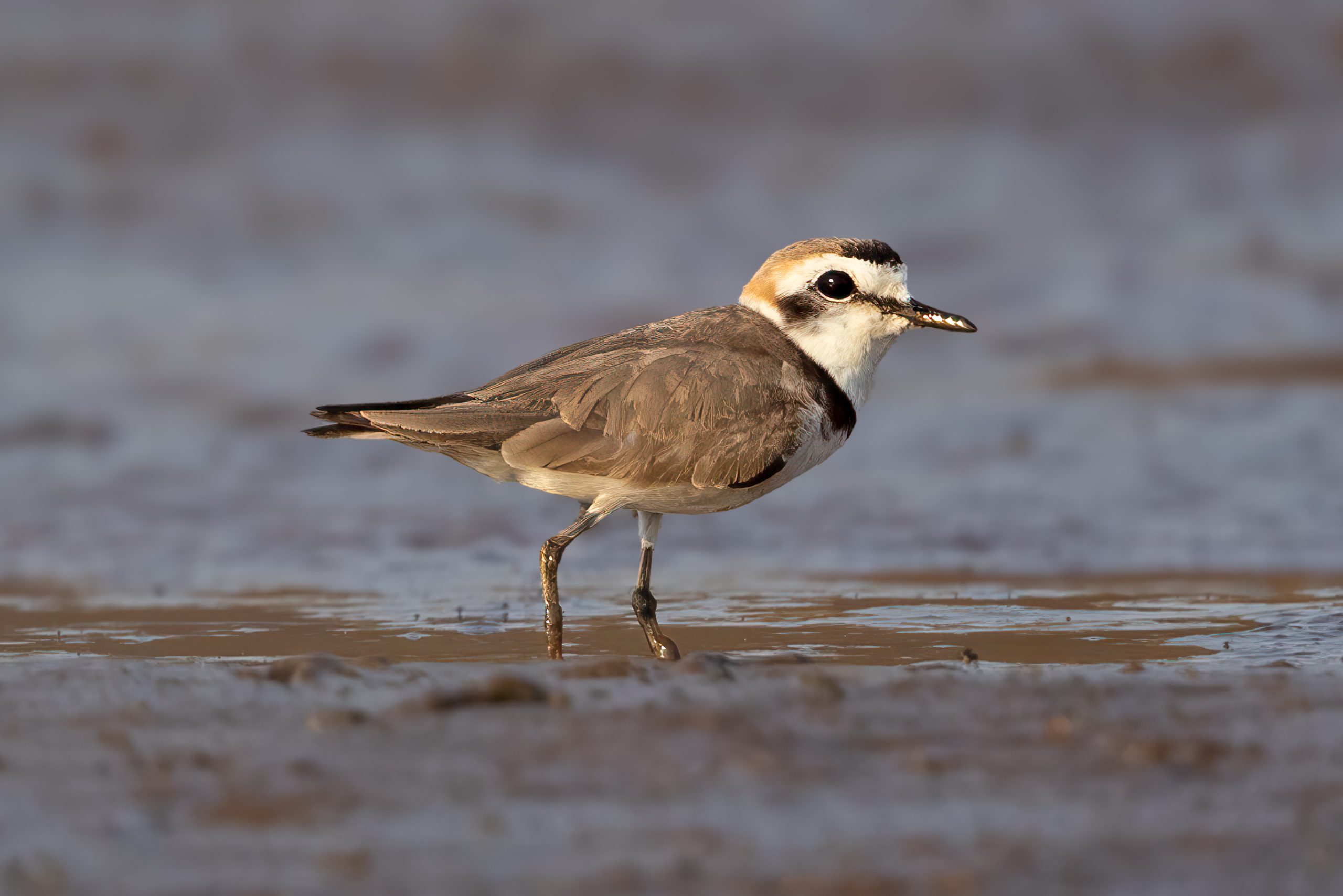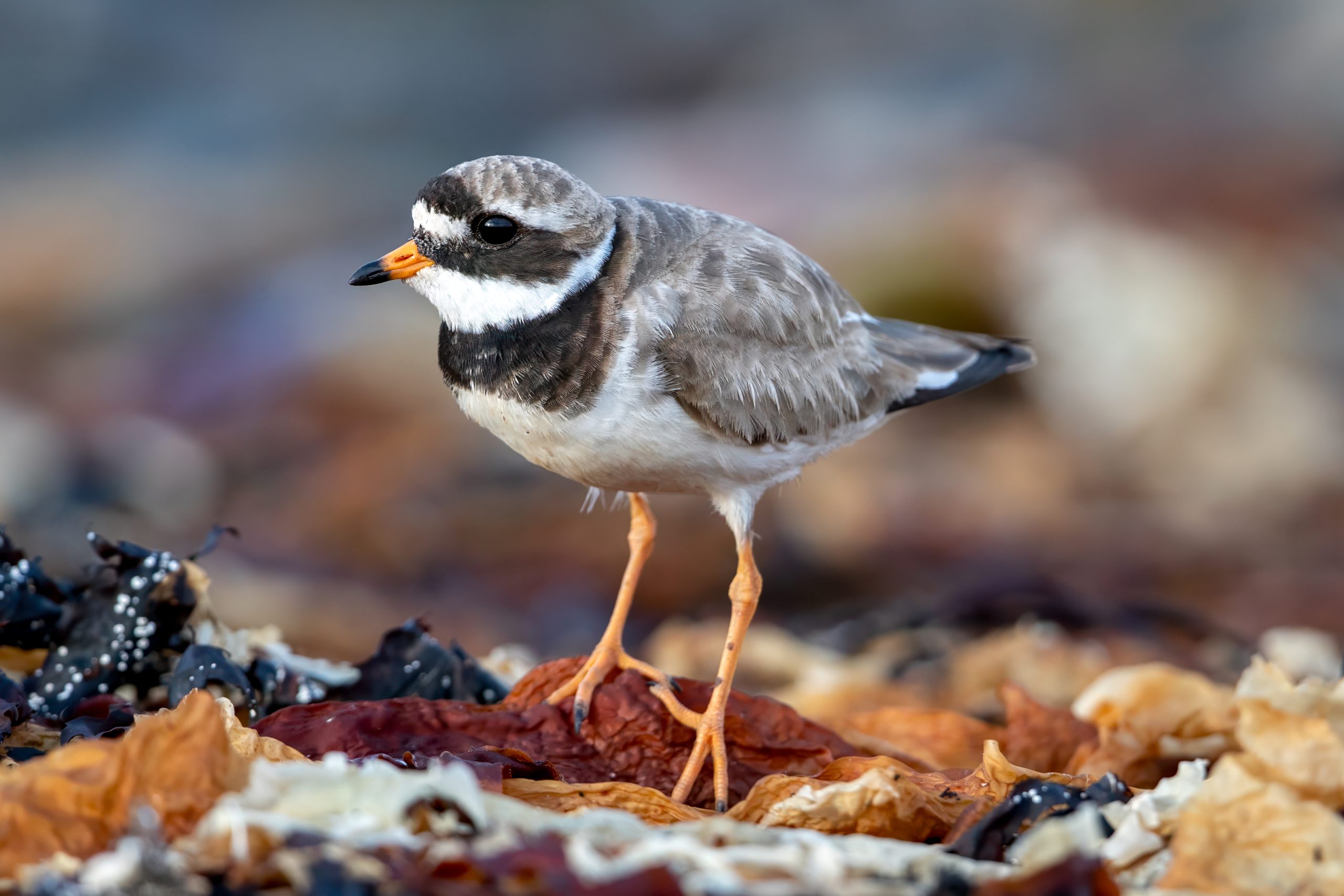Description
The European golden plover (Pluvialis apricaria) is a medium-sized bird distinguished by its striking breeding plumage. This species is primarily found in northern Europe and western Asia, breeding in the Arctic tundra and moorlands of Scandinavia, Russia, and the British Isles. During the breeding season, adults exhibit a beautiful golden-spotted back, a black face, and black underparts bordered with white. In non-breeding plumage, they become more subdued with mottled brown and white coloring. They typically measure 26-29 cm (10.2-11.4 in) in length with a wingspan of 67-76 cm (26-30 in), and weigh between 140-300 grams (4.9-10.6 oz). It can be differentiated from the similar Pacific golden plover (Pluvialis fulva) by its shorter legs, larger size, thicker body, as well as a more extensive white border along the black underparts.
Diet & habitat
European golden plovers inhabit a variety of open landscapes. They are commonly found in tundra, moorland, and upland areas during the breeding season. In the winter months, they migrate to agricultural fields, coastal wetlands, and estuaries. Their diet primarily consists of insects, spiders, mollusks, and worms, which they forage from the ground. They employ a “run-and-pick” technique, running a few steps before stopping to peck at prey on the surface.
Migration
European golden plovers are migratory birds. They breed in the northern parts of Europe and Asia during the warmer months and migrate southwards for the winter. Their migration typically spans from August to October and involves traveling to western Europe, the Mediterranean, and even reaching as far as North Africa. These birds are known for their strong fidelity to wintering sites, often returning to the same location each year. The migration journey can cover thousands of kilometers, highlighting their remarkable endurance and navigational abilities.
Nesting
The breeding season for European golden plovers starts from late April to early June. They build their nests on the ground, typically in a shallow scrape lined with lichens, moss, and grass. Females lay 3-4 eggs, which are incubated by both parents for about 27-30 days. Chicks are precocial, meaning they are relatively mature and mobile shortly after hatching. They leave the nest within hours and are capable of feeding themselves, though they are still tended by their parents. Fledging occurs approximately 30-40 days after hatching.
Status
The European golden plover is currently listed as least concern on the IUCN Red List. However, their populations are subject to fluctuations due to habitat loss, climate change, and disturbances from human activities. Conservation efforts focus on preserving their breeding and wintering habitats to ensure stable population levels.




